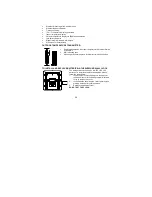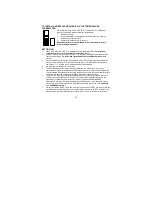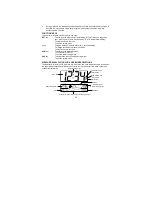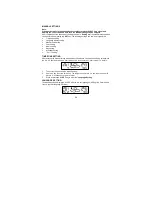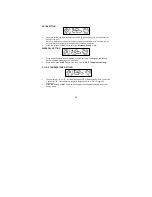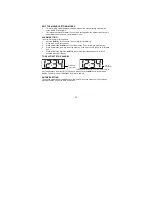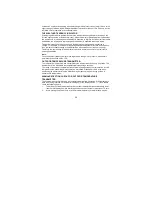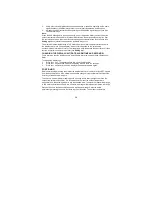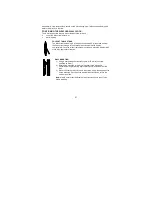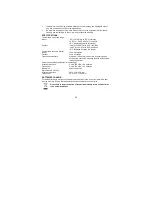
21
TO INSTALL AND REPLACE BATTERIES IN THE TEMPERATURE
TRANSMITTER
The transmitter uses 2 x AA, IEC LR6, 1.5V batteries. To install and
replace the batteries, please follow the steps below:
1.
Remove the cover.
2.
Insert the batteries, observing the correct polarity (see marking
inside battery compartment).
3.
Replace the battery cover on the unit.
Alkaline batteries are recommended for use in both units. Avoid
using rechargable batteries.
SETTING UP:
1.
Insert the 2 x AA, IEC LR6, 1.5V batteries into the transmitter (See “To install and
replace batteries in the Temperature Transmitter” above).
2.
Within 3 minutes, insert 2 x AA, IEC LR6, 1.5V batteries into the Weather wall clock as
indicated above (see "To install and replace batteries in the Weather wall clock“
above).
3.
Once the batteries are in place, all segments of the LCD will light up briefly and a brief
beep sound will be hear. Then the indoor temperature “OF” and outdoor temperature - - -,
the time as
0:00
, the date as 1/1, and weekday will be displayed.
4.
Do not press any buttons for 10 minutes
5.
The Weather wall clock will start receiving data from the transmitter. The remote
temperature will then be displayed on the Weather wall clock. If the outdoor temperature
is not displayed 90 seconds after inserting the batteries into the receiver, all batteries are
needed to be removed and wait for at least 1 minute for reset from step 1.
6.
The DCF time code reception will automatically start. This takes typically between 3 - 5
minutes in good conditions. This time period is an excellent opportunity to locate the
transmitter in suitable location outdoors. In order to ensure sufficient 868MHz
transmission however, this should under good conditions be no more than 100 meters
from where the Weather wall clock will be finally positioned (see notes on “Positioning”
and “868MHz Reception”).
7.
If after 10 minutes the DCF time has not been received, use the SET key to enter into the
set mode and change either the time or date in order to activate the DCF reception. The
clock will then automatically attempt to receive the DCF time. When this is successful,


